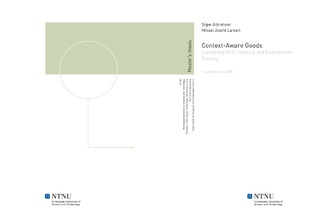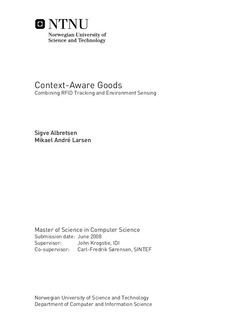| dc.description.abstract | Technology is becoming increasingly important in the effort to ensure safe food and good food quality, especially in the fresh food industry. Examples of such technology are systems for tracking and tracing food products, and the use of sensors to obtain context information about the environment. This technology is becoming more mature, and various standards are starting to emerge, but little work has been done combining these technologies or respective standards. This thesis presents an example software architecture combining an RFID tracking system with context information retrieved from sensors. The sensors can be located both on the RFID tag itself and in locations where the items are, or have been, located. Two frameworks are combined in this architecture; EPC Architecture Framework for item tracking and Sensor Web Enablement for sensor and context information. A set of scenarios describing potential uses of this technology is also presented. They are grouped by topics, with categories such as quality deterioration, temperature profiles, sensor collaboration and intelligent goods, hierarchy of goods with sensors, and proximity control. Each scenario is independent of the technical solution used, and does not require our architecture. The focus is on what can be achieved when a context-enabled tracking solution is implemented. These scenarios form the basis for the requirements specification of the architecture. The thesis shows that the integration of the two standard frameworks can be achieved with relatively small modifications, and that the technology needed to achieve what is presented in the scenarios is already available. It is, however, necessary to perform pilot implementations and testing in order to find how best to utilize the technology. | nb_NO |

